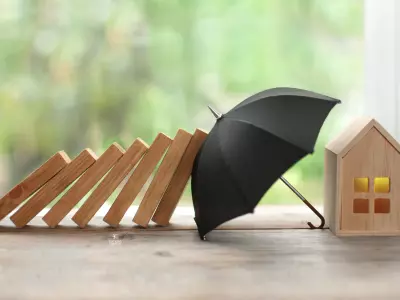Don't Let Winter Catch You Off Guard: Your Complete Fall Home Protection Checklist for Northern Virginia

As the vibrant colors of autumn begin to paint the landscape across the region, homeowners know that this beautiful season signals the approach of winter's challenges. The transition from the humid summers to the potentially harsh winters of the Mid-Atlantic region requires proactive preparation to protect your home and ensure your family's comfort throughout the colder months ahead.
The unique climate presents specific challenges that homeowners must address during fall maintenance season. With average winter temperatures ranging from the mid-20s to low-40s Fahrenheit, combined with occasional ice storms and moderate snowfall, proper preparation becomes essential for preventing costly damage and maintaining energy efficiency.
Exterior Home Maintenance
Roof and Gutter System Care
Your home's roof and gutter system serve as the first line of defense against fall and winter weather. Begin your maintenance routine by thoroughly inspecting your roof for loose, damaged, or missing shingles. The region's summer storms can cause significant wear, and addressing these issues before winter precipitation arrives prevents water damage and ice dam formation.
Clean your gutters and downspouts completely, removing all leaves, twigs, and debris that have accumulated throughout the summer months. The area's abundant deciduous trees, including oaks, maples, and sweet gums, shed tremendous amounts of foliage that can quickly clog drainage systems. Consider installing gutter guards to minimize future maintenance while ensuring proper water flow away from your foundation.
Check that downspouts direct water at least six feet away from your home's foundation. This distance becomes crucial during winter thaw cycles when improper drainage can lead to basement flooding or foundation settling.
HVAC System Preparation
Schedule a professional inspection and tune-up for your heating system before temperatures drop consistently below 50 degrees. The heating season typically begins in earnest by mid-November, making October the ideal time for this crucial maintenance task.
Replace your HVAC filter with a fresh, high-quality option appropriate for your system. During fall months, when windows remain closed more frequently, indoor air quality becomes increasingly important. Consider upgrading to HEPA filters if family members suffer from allergies, as high pollen counts can persist well into October.
Inspect and clean your home's air ducts, paying special attention to removing any summer debris or pest intrusions. Seal any visible gaps or leaks in ductwork to improve energy efficiency during the heating season.
Test your heating system by running it for several hours while monitoring for unusual noises, odors, or performance issues. Address any problems immediately rather than waiting until the first cold snap when HVAC technicians become overwhelmed with emergency calls.
Exterior Weatherization
Walk around your home's perimeter, carefully inspecting all caulking and weatherstripping around windows, doors, and other openings. Temperature fluctuations cause materials to expand and contract, creating gaps that allow heated air to escape and cold air to infiltrate your home.
Remove and store window air conditioning units, covering the openings with insulated panels or plastic sheeting. Clean and inspect storm windows before installation, replacing any damaged panes or weatherstripping.
Examine your home's exterior siding for cracks, loose boards, or other damage that could allow moisture penetration during winter months. Freeze-thaw cycles can quickly expand minor issues into major problems requiring expensive repairs.
Landscape and Outdoor Preparation
Trim tree branches that hang within ten feet of your home, power lines, or other structures. The area occasionally experiences ice storms that can bring down weakened branches, causing significant property damage or power outages.
Drain and disconnect all garden hoses, storing them in a protected location to prevent cracking from freezing temperatures. Shut off exterior water valves and drain the lines to prevent pipe bursts during cold snaps.
Clean and store outdoor furniture, grills, and decorative items that could be damaged by winter weather. Consider applying protective treatments to wooden deck furniture before storage to prevent moisture damage during the humid spring season.
Chimney and Fireplace Maintenance
If your home includes a fireplace or wood-burning stove, schedule a professional chimney inspection and cleaning before the heating season begins. The moderate use season allows creosote and debris to accumulate gradually, creating fire hazards that become dangerous when regular use resumes.
Install or inspect chimney caps and screens to prevent animal intrusion during winter months when small creatures seek warm shelter. Check the damper mechanism to ensure proper operation and tight sealing when the fireplace isn't in use.
Stock up on properly seasoned firewood if you plan to use your fireplace regularly. Store wood in a dry, well-ventilated area at least 20 feet from your home to discourage insect infestations.
Interior Home Maintenance
Heating System Optimization
Beyond professional HVAC maintenance, homeowners can perform several interior tasks to maximize heating efficiency. Test all thermostats, replacing batteries in programmable units and considering upgrades to smart thermostats that can significantly reduce energy costs through optimized scheduling and remote control capabilities.
Inspect heating vents throughout your home, ensuring furniture, curtains, or other items don't block airflow. Clean register covers and consider having air ducts professionally cleaned if you notice excessive dust or musty odors when the system operates.
Check the area around your water heater for proper ventilation and signs of leakage or corrosion. Hard water can accelerate tank deterioration, making annual inspections crucial for preventing emergency replacements during winter months.
Insulation and Energy Efficiency
Inspect attic insulation levels and condition, looking for signs of pest damage, moisture intrusion, or settling that reduces effectiveness. Local building codes recommend specific R-values for optimal energy efficiency, and upgrading insulation can provide immediate comfort improvements and long-term energy savings.
Check basement and crawl space areas for air leaks, moisture problems, or insulation gaps. These areas often represent significant sources of energy loss during heating season and can harbor mold growth if moisture issues aren't addressed promptly.
Consider installing plastic sheeting over windows that aren't regularly opened during winter months. This inexpensive measure can dramatically improve comfort in older homes with single-pane windows.
Safety System Maintenance
Test all smoke detectors and carbon monoxide detectors throughout your home, replacing batteries even in hardwired units that include battery backup systems. Fall's longer nights and increased heating system use elevate the importance of properly functioning safety equipment.
Inspect fire extinguishers for proper pressure and expiration dates, replacing units as necessary. Review and practice your family's fire escape plan, accounting for winter conditions that might affect exit routes or outdoor safety.
Check that flashlights, battery-powered radios, and emergency supplies remain accessible and functional. The area occasionally experiences power outages during winter storms, making emergency preparedness essential for family safety and comfort.
Seasonal Timing and Professional Services
The fall maintenance season typically extends from early September through late November, with optimal timing varying based on specific tasks and weather patterns. Begin exterior work during September's milder temperatures, saving interior projects for October and November when outdoor conditions become less favorable.
Many maintenance tasks require professional expertise, particularly HVAC servicing, chimney cleaning, and major roof repairs. Schedule these services early in the fall season to avoid the rush that begins when temperatures drop significantly.
Consider creating a maintenance checklist and tackling projects systematically over several weekends rather than attempting everything simultaneously. This approach allows for proper attention to detail while spreading costs across multiple months.
Professional Services and Support
While many fall maintenance tasks can be handled by dedicated homeowners, certain jobs require professional expertise, specialized equipment, or safety considerations that make DIY approaches inadvisable. We maintain a carefully curated list of trusted, licensed professionals throughout Northern Virginia who specialize in home maintenance services.
Our network includes experienced HVAC technicians, certified chimney sweeps, licensed electricians, roofing specialists, and other skilled tradespeople who understand the unique challenges of maintaining homes in our region's climate. These professionals have been vetted for quality workmanship, fair pricing, and reliable service, ensuring you receive the best possible care for your home.
When to Contact Our Professional Network:
- HVAC system repairs or complex maintenance issues
- Chimney cleaning and inspection services
- Electrical work including outlet installation or panel upgrades
- Major roof repairs or gutter system replacements
- Tree removal near power lines or structures
- Insulation upgrades requiring specialized equipment
- Any task that involves working at heights or with gas lines
Don't let the complexity of fall maintenance overwhelm you or delay essential preparations. Contact us for recommendations and connections to trusted professionals who can ensure your home is properly prepared for the winter season ahead.
Conclusion
Proper fall maintenance protects your Northern Virginia home from winter's challenges while maintaining comfort, safety, and energy efficiency throughout the colder months. By addressing these essential tasks proactively, homeowners can prevent costly emergency repairs, reduce energy bills, and ensure their families remain comfortable regardless of what winter weather brings to the region.
The investment in fall maintenance pays dividends through increased home value, improved energy efficiency, and the peace of mind that comes from knowing your home is properly prepared for whatever challenges the winter season may present. Start early, work systematically, and don't hesitate to reach out to us for professional referrals when tasks require specialized expertise or equipment. We're here to help you connect with the right professionals to keep your home in optimal condition.
Categories
Recent Posts














